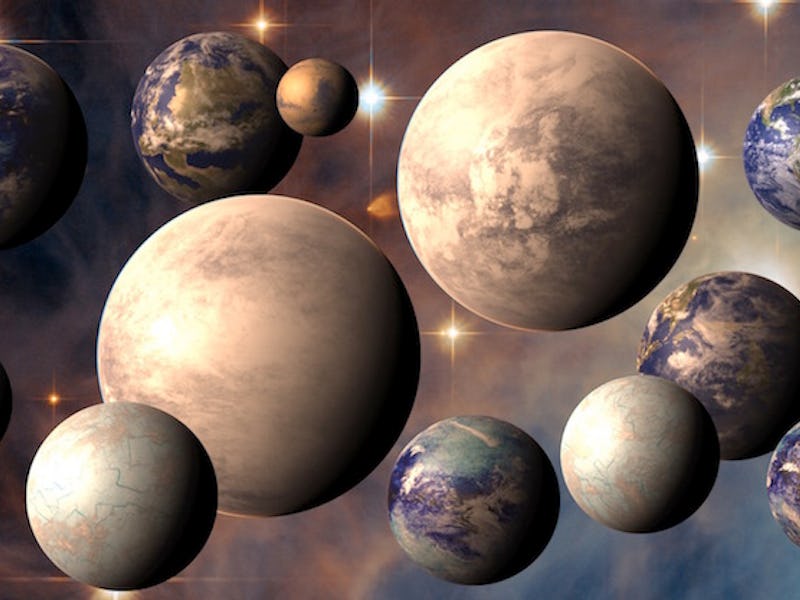Airborne dust could be a sign of a planet's habitability
A new study suggests that dust widens the habitable zone.

Of all the planets in the Solar System, Earth is the only one that has liquid water on its surface and can support life. Earth orbits within the Sun's habitable zone, also known as the Goldilocks Zone, a distance from the star where it is not too hot nor too cold for liquid water.
The habitable zone is the main factor that astronomers look for when scouring the cosmos for Earth-like planets that could support life. However, a new study suggests that certain planets could be habitable even if they are outside of the habitable zone -- if they have airborne dust in their atmosphere.
The study, published this week in the journal Nature, increases the potential for finding habitable planets by widening the window of the habitable zone.
Three computer simulations of terrestrial exoplanets with winds (arrows) and airborne dust (color scale), with an M-dwarf host star in the distance.
The team behind the study created a computer simulation of planets orbiting around M-dwarf stars. M-dwarfs are the smallest and coolest type of stars, and they are also the most common type of star in the Milky Way.
Planets orbiting around M-dwarf stars tend to be tidally locked, where one side constantly faces the star during their orbit. This results in a permanent day side and night side.
However, through their simulation, the researchers discovered that airborne dust cools down the day side while warming the night side. As a result, the dust essentially slows down the tidally locked planet's loss of water in a process known as negative climate feedback.
Planets in the Solar System, such as Venus and Mars, may have suffered from water loss during the billions of years of their existence, and went from a wet, habitable planet to a dry, desolate planet in the case of Mars or a scorching hot world in the case of Venus.
However, the presence of dust could help tidally locked planets maintain a temperature to support water on the surface, thereby increasing their habitable zone window.
"On Earth and Mars, dust storms have both cooling and warming effects on the surface, with the cooling effect typically winning out," Ian Boutle, a researcher at the Met Office in the United Kingdom, and lead author of the new study, said in a statement. "But these ‘synchronized orbit’ planets are very different. Here, the dark sides of these planets are in perpetual night, and the warming effect wins out, whereas on the dayside, the cooling effect wins out. The effect is to moderate the temperature extremes, thus making the planet more habitable.”
The study also found that this dust could obscure other elements of life that scientists look for in a planet's atmosphere such as water vapor and oxygen.
“Airborne dust is something that might keep planets habitable, but also obscures our ability to find signs of life on these planets," Manoj Joshi, a professor of climate dynamics at the University of East Angila, and co-author of the study, said in a statement. "These effects need to be considered in future research.”
There have been over 4,000 exoplanets discovered so far, with scientists continuing their quest to find a world out there in the cosmos that shows signs of habitability similar to Earth. However, the more planets they find, the more scientists realize that our definition of habitability needs to not be constrained by what we already know.
Abstract: Identification of habitable planets beyond our solar system is a key goal of current and future space missions. Yet habitability depends not only on the stellar irradiance, but equally on constituent parts of the planetary atmosphere. Here we show, for the first time, that radiatively active mineral dust will have a significant impact on the habitability of Earth-like exoplanets. On tidally-locked planets, dust cools the day-side and warms the night-side, significantly widening the habitable zone. Independent of orbital configuration, we suggest that airborne dust can postpone planetary water loss at the inner edge of the habitable zone, through a feedback involving decreasing ocean coverage and increased dust loading. The inclusion of dust significantly obscures key biomarker gases (e.g. ozone, methane) in simulated transmission spectra, implying an important influence on the interpretation of observations. We demonstrate that future observational and theoretical studies of terrestrial exoplanets must consider the effect of dust.